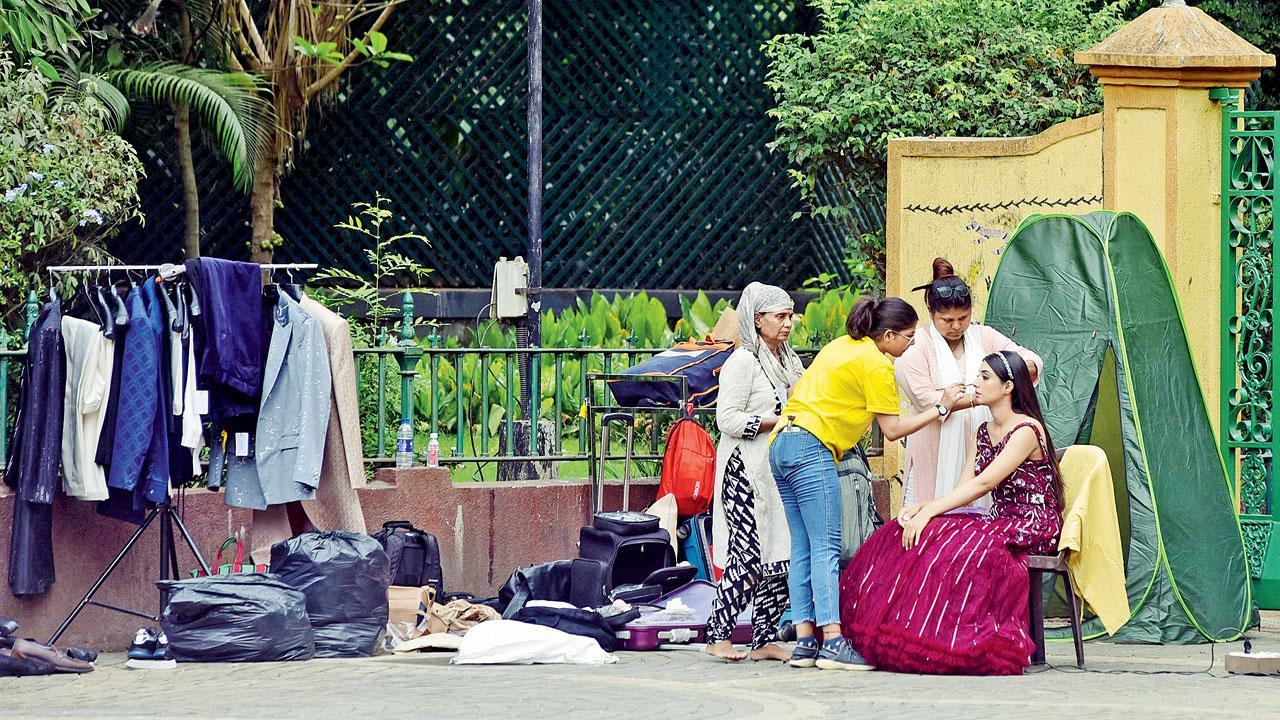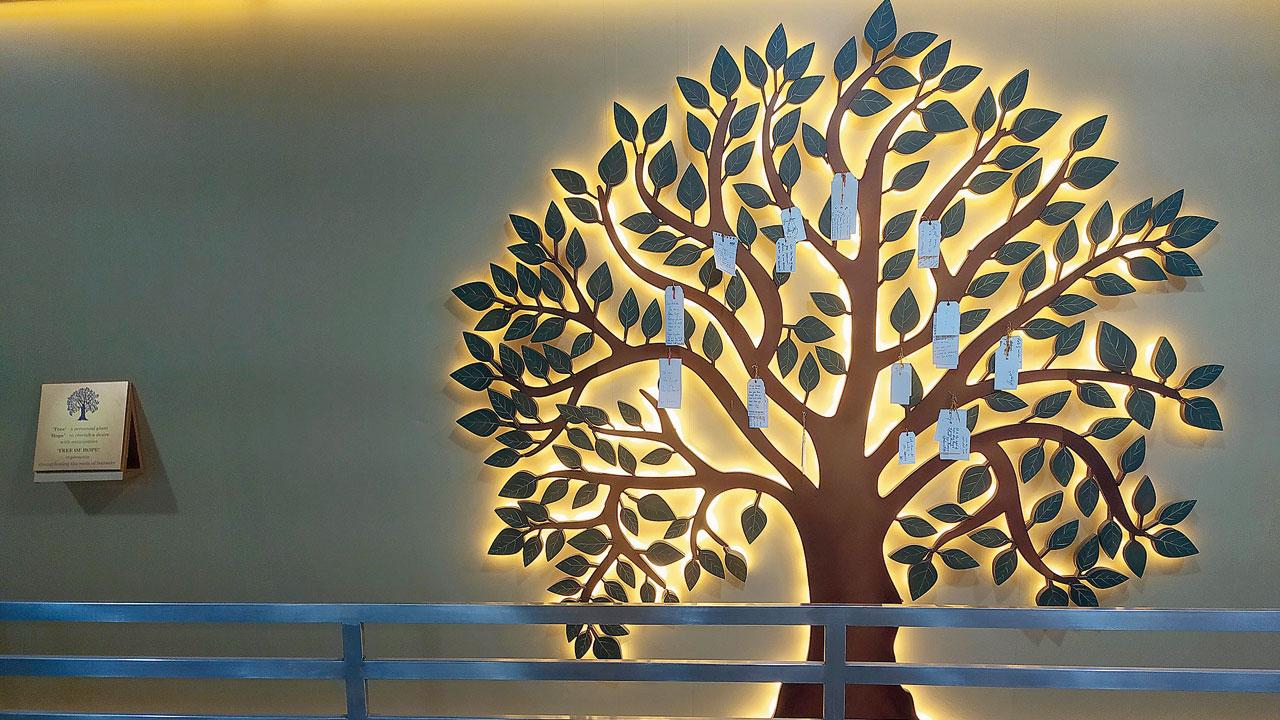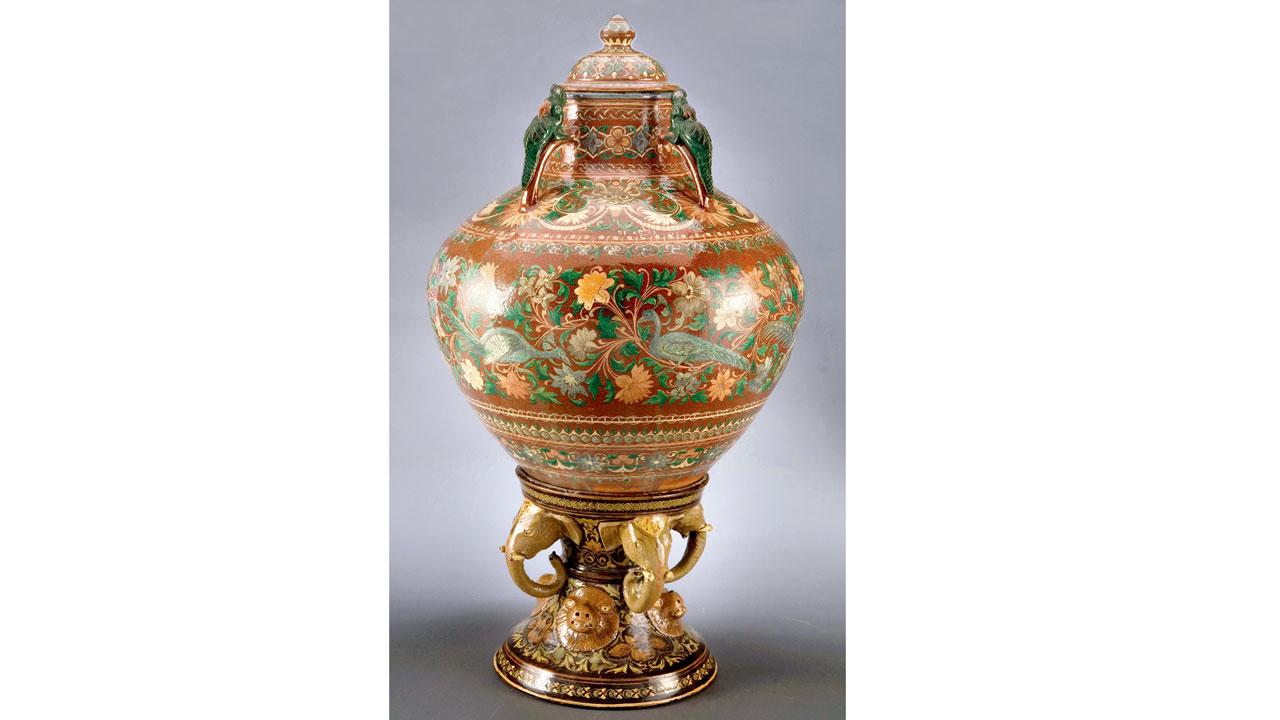The city - sliced, diced and served with a dash of sauce

Pic/Shadab Khan
Creating a scene
Make-up artists offer a touch-up to a model during a shoot on a street in Byculla
Small surprise in Bandra

Seema Sadequian with Abdul Roziq
Are you even doing social media right if a video of Tajikistan-based singer Abdul Roziq crooning ’90s Bollywood hits hasn’t shown up on your feed? The entertainer — dubbed the shortest singer in the world — was recently in the city, as part of his maiden trip to India. During his stay in Mumbai, Roziq was spotted not once, but twice, at Bandra’s Cafe Mommy Joon, which is co-owned by Priya Dutt and her friend, head chef Seema Sadequian. Over lamb shashlik, lamb chops, kebab koobideh and Iranian chai, the singer won over the café crew. “I had seen his videos but when you meet him, you realise how sweet, friendly and humble he is. He really relished the food and came back a second time,” Sadequian told this diarist. And of course, he signed off with a song.
Short films, long journeys

A moment from the film, Cheepatakadumpa
Devashish Makhija’s short films Cheepatakadumpa and Cycle will be screened at the 19th Indisches Filmfestival Stuttgart. The film-maker, known for strong messages in his works, noted, “Often, festivals shy away from featuring unabashed political voices.”

While Cycle narrates the tale of a tribal woman, who turns rebel in the absence of systemic justice, Cheepatakadumpa is a black comedy where three women return to being their mischievous teenage selves and turn small-town patriarchy on its head. “All my money has gone into making these films; I’m glad the pieces have travelled widely in the last eight months,” he told us.
A note-worthy idea

The soapy smell of sanitisers, white-washed walls, beeping machines, and a sense of gloom — hospitals aren’t really the coolest hangouts, are they? No matter what we’re there for, in this diarist’s experience, the ambience can be overwhelming and unnerving. But during a recent visit to Nanavati Max Hospital, a beau-tree-ful sight made us stop and smile. Right outside the cafeteria on the ground floor is a lit-up installation of a tree. The Tree of Hope, a board next to it explains, symbolises strengthening the roots of recovery. What warmed our hearts in a big way were little notes — some of gratitude, others wishing courage and recovery — that were tied on the branches of the tree. On a day filled with uncertainty and apprehension, the sight planted a seed of hope.
Pottering around

Ajanta Pottery, glazed ceramic and pigment, c 1880, Sir JJ School of Art, Mumbai. PIC COURTESY/BDL MUSEUM
Pottery classes might be the rage among hipsters today, but did you know that Sir JJ School of Art played a pivotal role in shaping a design innovation involving the art form? As part of Museum Week, Dr Bhau Daji Lad (BDL) Museum shared an interesting nugget of history on how Sir George Wilkins Terry, the superintendent of the school (1858-82) and curator of the museum (1868-79), encouraged students to experiment with glazes on pottery. Dubbed “Terryware”, Bombay Pottery and Ajanta Pottery, the pieces gained international fame. A piece of Ajanta Pottery is on display now at the museum’s A Hall of Wonder exhibition. Tasneem Zakaria Mehta, managing trustee and director, BDL, shared, “Pottery and porcelain were important economic products; Terry had attempted to study local pottery traditions and set up a small kiln. A master potter from Sindh was appointed to teach the glazing technique.” In the 1880s, students were also documenting the murals and panels at Ajanta Caves under principal John Griffiths. “The designs on the pottery were inspired by frescoes from Ajanta. Natural floral patterns from Sindh were also adapted, and several new shapes and colours were added to the repertoire,” she added.
The stage is set

We had previously announced on this page about a play-writing opportunity organised by Rage Productions and the Connections for Culture grant by the British Council. Post the submission, four winners have been picked from 120 entries. Shernaz Patel, co-founder, Rage, told us, “Everyone had to send in a sample of their writing along with factors they are struggling with as playwrights. The list was compiled based on such samples. The process that begins in July, will continue over six months, and we hope to have the plays ready by early next year.”
 Subscribe today by clicking the link and stay updated with the latest news!" Click here!
Subscribe today by clicking the link and stay updated with the latest news!" Click here!










